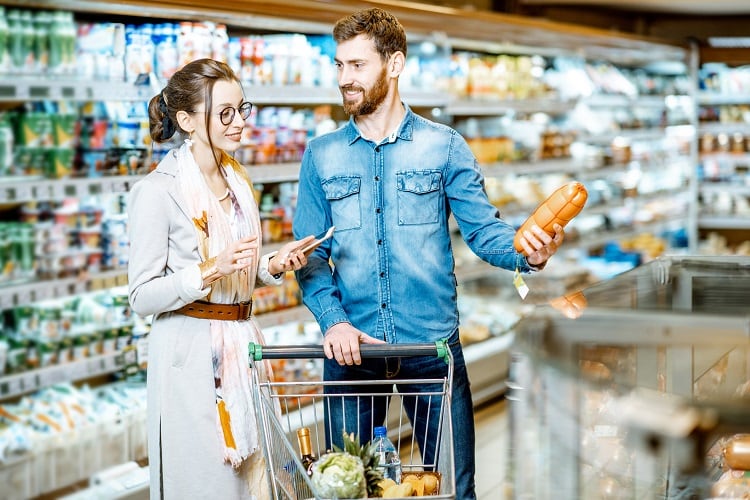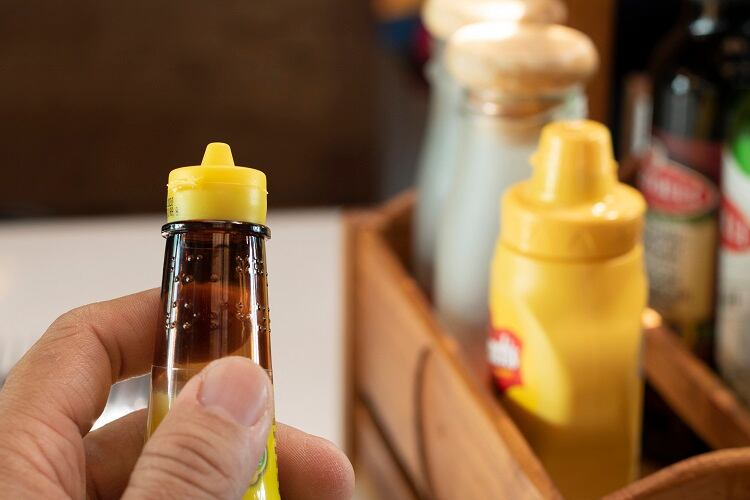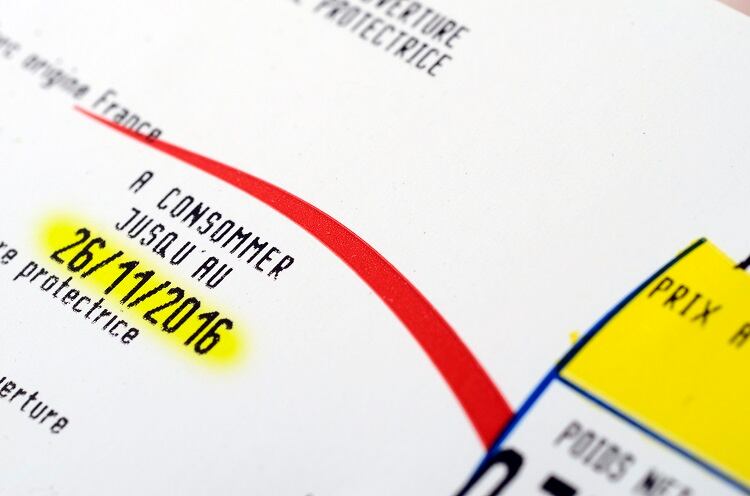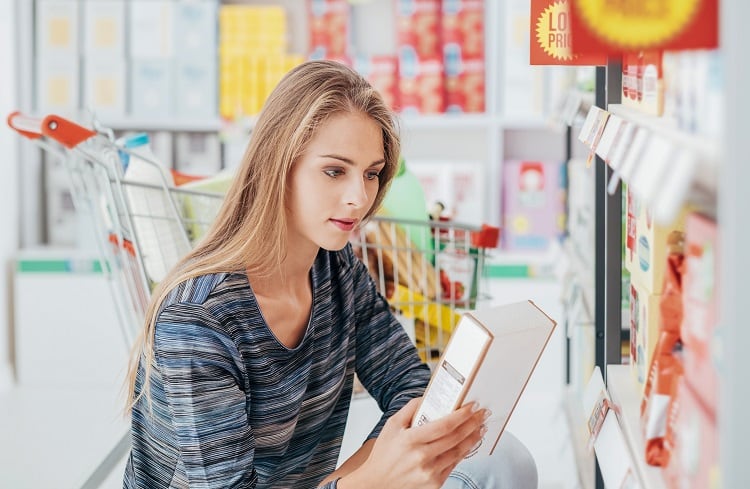Growing concern for animal welfare is thought to stem from animal agriculture’s move away from small family farms towards intensive farming practices.
Many such practices are deemed unsustainable, whether that be related to their impact on the environment, public health, or animal welfare.
In Europe, a large majority of consumers say that farm animal welfare is important. According to a survey conducted by the Welfare Quality Network, 69% of respondents in the Netherlands agree with this statement, as do 73% in the UK, 75% in France, and 83% in Hungary in Sweden.
In Norway and Italy, 84% and 87% of consumers, respectively, similarly agreed that farm animal welfare is important.
While the general public’s concern for animal welfare in food production is regarded high, their understanding and knowledge surround animal welfare issues is poor.
One way of increasing public education, while simultaneously improving animal welfare standards and empowering the consumer to make informed purchasing decisions, is through front-of-pack food labelling.
Animal welfare: The Farm to Fork potential?
In 1974, animals were legally recognised as sentient beings in the EU. This means that for close to 50 years, Member States have been obligated to respect welfare requirements of animals when preparing and implementing EU policies.
Since then, EU legislation has expanded to target particular market animals, including poultry, calves and pigs. Transport and slaughter operations are regulated for all species.
What is 'good animal welfare'?
According to the World Organisation for Animal Health’s (OIE) 2018 of good animal welfare:
“An animal is in a good state of welfare, if it is healthy, comfortable, well-nourished, safe, able to express innate [natural] behaviour, and if it is not suffering from unpleasant states such as pain, fear and distress.”
Within these legislations, however, certain producers meet higher welfare standards than others. And without an EU-wide animal welfare labelling scheme, it is challenging to differentiate such varying standards on-shelf.
In a question written to the European Commission in late 2019, Spanish politician Izaskun Bilbao Barandica asked when animal welfare certification procedures would be developed to “help consumers distinguish products that have followed responsible animal welfare breeding and slaughter protocols, and thereby facilitate the spread of these protocols on EU farms”.
European Commissioner for Health and Food Safety Stella Kyriakidou responded last month, noting that the soon-to-be-published Farm to Fork Strategy will consider animal welfare across the bloc.
“In this framework, the Commission will consider which measures could be envisaged in the future (including in regard to information to consumers), taking also into account the conclusions on animal welfare adopted by the Council in December 2019, which invite the Commission to ‘assess the need for and impact of an EU regulatory framework with criteria for animal welfare labelling schemes taking into account national experience’.”
This issue will also be considered in the framework of the current evaluation of the EU animal welfare strategy, she continued, which is expected by the end of 2020.
“Furthermore, where needed, additional research into indicators and their application into certification schemes could be considered under the forthcoming research & innovation framework programme for 2021-2027 Horizon Europe” – Stella Kyriakidou, European Commissioner for Health and Food Safety
High animal welfare labels in Europe
In the absence of an EU-wide scheme, high animal welfare labels – developed through private or public initiatives – are gaining traction.
The Étiquette Bien-Être Animal (Animal Welfare Label) in France, for example, was recently adopted by supermarket Carrefour, retail company Système U, poultry brand Galliance, and agricultural cooperative Terrena.
The labelling scheme is the result of a collaboration between supermarket retailer Casino, four animal welfare associations – LFDA, CIWF, Oaba, and Welfarm – and poultry producers Fermiers de Loué and Fermiers du Sud-Ouest. The group formed a coalition in 2017 and launched the labelling scheme for poultry products in 2018.
Their aim was to develop an easy-to-read label that would help consumers better understand animals’ living conditions, from the supermarket aisle.
The label, which is based on 230 welfare criteria, displays a score from A to D. It also assigns the food product one of four welfare standards: superior, good, quite food, and standard.
Now, a new letter is being added to the scheme. ‘E’ will be attributed to products with ‘minimal’ animal welfare standards.
The updated labels also visually depict in what environment the chicken was raised, whether that be free range, intensive indoors, or somewhere between the two.
According to the coalition, the scheme not only provides ‘clear’ and ‘reliable’ information but encourages consumers to select products and brands that respect animal welfare.
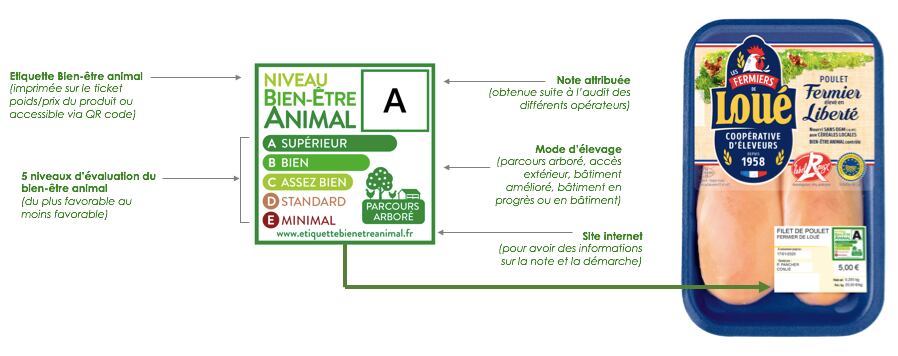
In the UK, not-for-profit Compassion in World Farming has also developed a labelling scheme it says would give shoppers an ‘immediate, clear understanding’ of the farming system used to produce meat and dairy products.
Its goal is for every meat or dairy product to carry the label, “ensuring that every shopper can make an informed choice”.
The label is founded on a six-tier scheme, depicting the environment the animal was reared in: intensive indoors, improved indoors, partially outdoors, or free range. The proposed label would also denote whether production was deemed organic, and whether the animal was pasture fed.
Does on-package label information influence purchase intentions?
Before adopting high welfare labels, brands will want to know how such schemes influence purchase intention. A recent Australian study published in Appetite looked at just that.
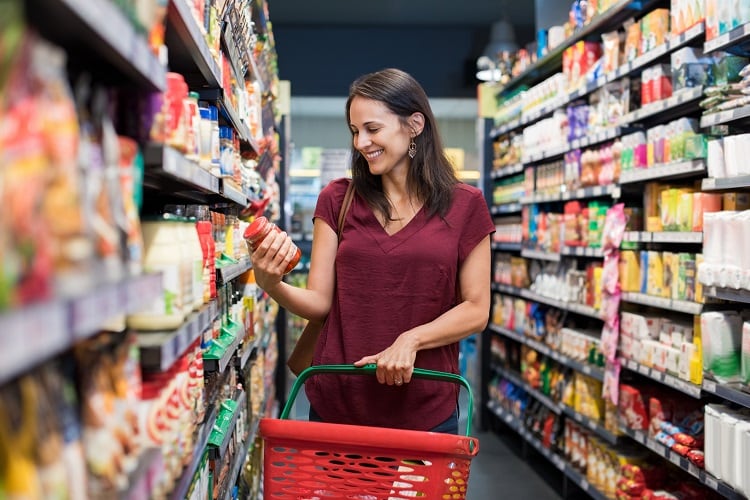
The research, led by Amelia Rose Cornish from the University of Sydney’s School of Veterinary Science, investigated consumers’ preferences for higher welfare products with on-package animal welfare labels.
Beyond the retail environment, the team also wanted to explore whether providing consumers with detailed information about the welfare conditions behind on-package labels could have a positive influence on farm animal welfare.
A total of 1612 participants were randomly assigned into two groups: one that focused on an animal welfare label; and the other an animal welfare label with details about the welfare standards signified by that label.
According to the findings, the provision of additional information ‘significantly increased’ intention to purchase higher than conventional welfare products.
As animal welfare is market-driven in Australia – as is the case in many countries worldwide – the researchers said their findings suggest providing farm animal welfare information at the point-of-purpose could have an impact.
“[It] could boost appreciation and demand for higher than conventional welfare products.”
Source: Appetite
‘The price of good welfare: Does informing consumers about what on-package labels mean for animal welfare influence their purchase intentions?’
Published online 2 January 2020
DOI: https://doi.org/10.1016/j.appet.2019.104577
Authors: Amelia Rose Cornish, Donnel Briley, Bethany Jessica Wilson, David Raubenheimer, David Schlosberg, and Paul Damien McGreevy


